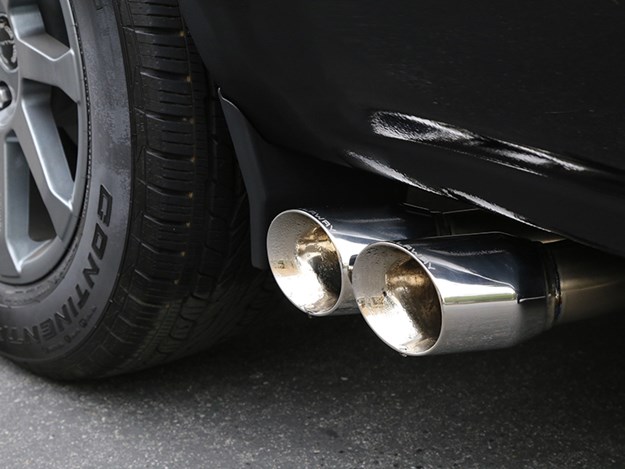Noise and function: the art of exhausts - Blackbourn



|
While the spotlight is often on an engine's induction set-up, Rob reckons the humble exhaust system deserves a bit of love
Writing for Unique Cars readers, people who know their cars, means contributors don’t need to contextualise everything and don’t need to join all the dots for readers. Not only are you with us as you read our stuff, some of you probably get there before us. It means of course that when we do drop the ball, you’re on to it like a seagull on to an unguarded chip. And we soon know. When I referred in one of my columns to an image as showing a Mark 2 Jaguar, Ed Guido promptly forwarded me the reader feedback that it was actually a Mark 1. Thanks for that. I’m better at my Jags now…
The reader-feedback button was pressed again in a recent issue when reader Steve Pearse responded to Morley’s irritation with a Camry’s flashy display of four exhaust outlets that looked a bit try-hard for a modest four-banger. Steve pointed out that the car in question was actually powered by a healthy 3.5-litre V6 that might well make good use of the flow capacity of the multi-pipe set-up.

It’s perhaps surprising that components as essentially utilitarian as automotive exhaust systems – the bits that dump the post-combustion gases – are right up there on the list of features that car enthusiasts have firm opinions about. Whether it’s about an exhaust’s form or function most of us do care. And that’s certainly been true for me since I started getting grease under my fingernails in my early teens. When I began to ‘improve’ the standard exhaust systems, first on old side-valve V8 Fords, then on ‘grey motor’ Holdens, questions of flow rates, reflected sonic wave-fronts, bi-modal exhaust tracts and so on were far from my mind. I spoke of ‘back-pressure’ as though I understood the concept – but in reality what I was after was simple. More noise.
The ‘look’ of your system also mattered. I wanted ‘tough’ looks. In those days tough for me was a big-bore side-exit pipe with its angle-cut end protruding just aft of the passenger door. This mimicked what I was seeing on circuit-racing Holdens, Jaguars and Customlines. With a bit more experience under my belt, including grief from rozzers about side-exit pipes, I came to understand that (a) tone matters, and (b) stubby side-exits don’t do tone – they do harshness. Thus began my appreciation of tailpipe resonance as a source of tone.
This led me to equip my last modified Holden six with a muffler mounted up front, close to the header-pipe collector. It stripped out a bunch of decibels before the clear run down the long tailpipe produced a pleasingly mellow tone. This technique was very transformative in the case of one VW Beetle. It had the muffler feeding into a forward-facing pipe that then turned across the car through a 90-degree bend, before heading rearward through another 90-degree bend, ultimately exiting under the back bumper. With the resonance from around two metres of pipe, the characteristically harsh ‘Dak Dak’ sound was replaced by a sporty exhaust note with a tone that would have been music to the ears of the MGB fraternity.

This ‘organ-pipe’ resonance phenomenon was illustrated by retired truckie Bob Foster in his book Birdum or Bust when describing the mesmerising sound produced by a WWII Diamond T, one of the first trucks in the Northern Territory to be re-powered with the then-novel (around 1957) GM Detroit diesel. The howling two-stroke’s manifold was hooked up to a bore-casing pipe running the full length of the truck’s chassis. Describing the reaction when the loaded Diamond T tackled the climb as it headed north out of Alice Springs, Foster wrote: "[We] did not want to miss one note of the performance. We would run out the front and listen in awe, counting the screaming gearshifts down through the box as Kurt negotiated the first hill, then listen to the music fading away up and down the scale as the road train negotiated the Big Dipper."
But here’s the thing – in the fast-approaching sunlit uplands of EV World, all of the petty debates about the best systems for cars, or how many outlets are needed, or where they should emerge, or whether the bass end of the spectrum needs boosting – even choosing between wrapping and ceramic coating for header pipes – will suddenly cease. Forever. How good’s that!
From Unique Cars #469, Aug/Sep 2022
Unique Cars magazine Value Guides
Sell your car for free right here
Get your monthly fix of news, reviews and stories on the greatest cars and minds in the automotive world.
Subscribe

.jpg)









.jpg)



